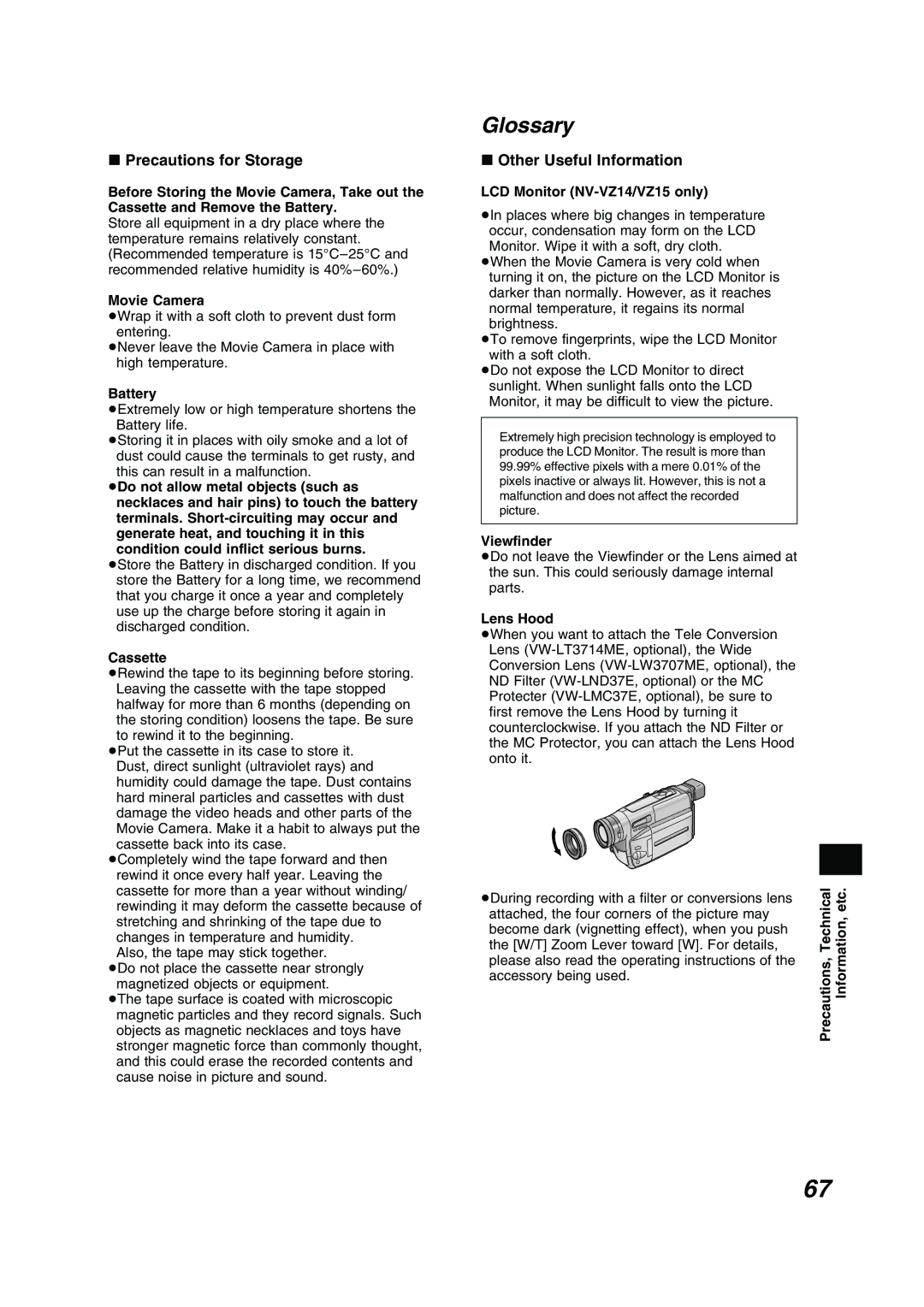
∫Precautions for Storage
Before Storing the Movie Camera, Take out the Cassette and Remove the Battery.
Store all equipment in a dry place where the temperature remains relatively constant. (Recommended temperature is
Movie Camera
≥Wrap it with a soft cloth to prevent dust form entering.
≥Never leave the Movie Camera in place with high temperature.
Battery
≥Extremely low or high temperature shortens the Battery life.
≥Storing it in places with oily smoke and a lot of dust could cause the terminals to get rusty, and this can result in a malfunction.
≥Do not allow metal objects (such as necklaces and hair pins) to touch the battery terminals.
≥Store the Battery in discharged condition. If you store the Battery for a long time, we recommend that you charge it once a year and completely use up the charge before storing it again in discharged condition.
Cassette
≥Rewind the tape to its beginning before storing. Leaving the cassette with the tape stopped halfway for more than 6 months (depending on the storing condition) loosens the tape. Be sure to rewind it to the beginning.
≥Put the cassette in its case to store it. Dust, direct sunlight (ultraviolet rays) and humidity could damage the tape. Dust contains hard mineral particles and cassettes with dust damage the video heads and other parts of the Movie Camera. Make it a habit to always put the cassette back into its case.
≥Completely wind the tape forward and then rewind it once every half year. Leaving the cassette for more than a year without winding/ rewinding it may deform the cassette because of stretching and shrinking of the tape due to changes in temperature and humidity.
Also, the tape may stick together.
≥Do not place the cassette near strongly magnetized objects or equipment.
≥The tape surface is coated with microscopic magnetic particles and they record signals. Such objects as magnetic necklaces and toys have stronger magnetic force than commonly thought, and this could erase the recorded contents and cause noise in picture and sound.
Glossary
∫Other Useful Information
LCD Monitor (NV-VZ14/VZ15 only)
≥In places where big changes in temperature occur, condensation may form on the LCD Monitor. Wipe it with a soft, dry cloth.
≥When the Movie Camera is very cold when turning it on, the picture on the LCD Monitor is darker than normally. However, as it reaches normal temperature, it regains its normal brightness.
≥To remove fingerprints, wipe the LCD Monitor with a soft cloth.
≥Do not expose the LCD Monitor to direct sunlight. When sunlight falls onto the LCD Monitor, it may be difficult to view the picture.
Extremely high precision technology is employed to produce the LCD Monitor. The result is more than 99.99% effective pixels with a mere 0.01% of the pixels inactive or always lit. However, this is not a malfunction and does not affect the recorded picture.
Viewfinder
≥Do not leave the Viewfinder or the Lens aimed at the sun. This could seriously damage internal parts.
Lens Hood
≥When you want to attach the Tele Conversion Lens
≥During recording with a filter or conversions lens attached, the four corners of the picture may become dark (vignetting effect), when you push the [W/T] Zoom Lever toward [W]. For details, please also read the operating instructions of the accessory being used.
Precautions, Technical Information, etc.
67
